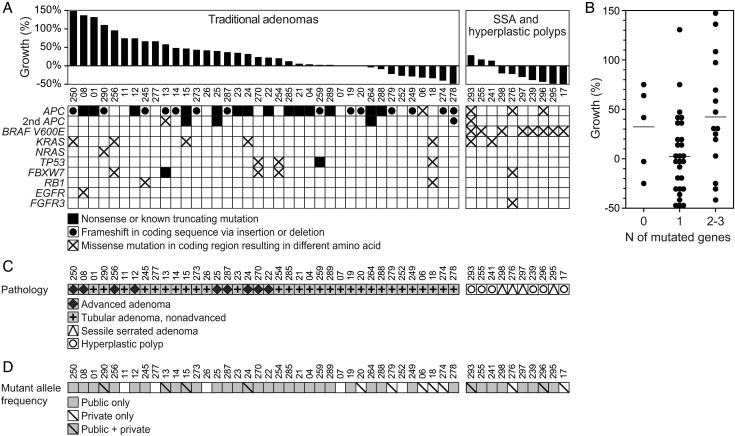Figure 3.
Small polyps often carried multiple pathogenic mutations. (A) Mutation profile of polyps with known growth fates is shown. Only well-annotated, known pathogenic variants are included. (B) Small polyps had 0–3 pathogenic mutations. Horizontal lines represent the mean (p value=0.044, Kruskal-Wallis test). The difference between polyps with one mutation and those with two or more was significant (p value=0.020, Wilcoxon rank-sum test). (C) The pathology of polyps with known growth fates (A) compared with mutation frequency. (D) The mutations can be classified as public, that is, clonal with an adjusted allele frequency of ≥30% or private, that is, subclonal with an adjusted allele frequency of 5%–30%. Small polyps with only private mutation(s) tended to regress. Private only versus public only and public and private were significantly different (p values=0.002 and 0.032, respectively, Wilcoxon rank-sum test).

